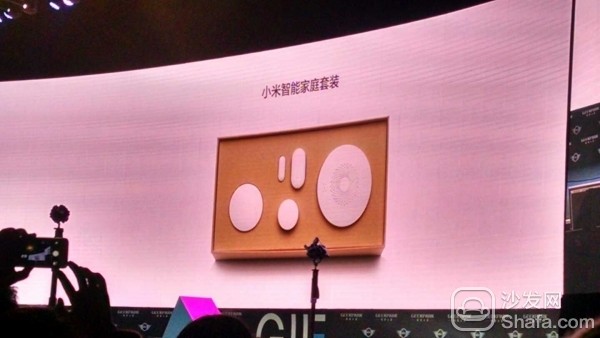Xiaomi recently launched the "Smart Home Package," which includes multi-function gateways, human sensors, door and window sensors, and wireless switches. Millet Multi-function Gateway uses Xiaomi Smart Module to connect Zigbee devices to Xiaomi Cloud and other smart devices.
This smart home package is actually an intelligent security system for home security. It also means that Xiaomi’s unilateralist marketing strategy for smart items such as wristbands, sockets, light bulbs, and air purifiers in 2014 has moved toward a single product and system. Smart home strategy. Combining some time ago, millet investment home improvement enterprises "love space", to enter the upper reaches of the smart home industry chain transformation of the thick traditional home improvement industry, you can see its determination to build a system-level smart home.

The universal control center mentioned by Lei Jun clearly refers to the long-running smart home entrance of the smart home industry giants. In the past 10 years, many smart home system solution providers have dreamed of building their own smart home centers. The material form is the gateway. The gateway is a network device that is not in the entire existing home network chain. The rice noodles are clamoring for brains. The keyword “ZigBee Gateway†on Baidu has also become a popular word. Rice noodles are asking what kind of artifact this is, especially ZigBee. What kind of technology is different from what everyone knows about WiFi?
In the current wireless communications, WiFi is the absolute mainstream and it took the lead in the smart single product market in 2014. However, ZigBee, which has prominent technical advantages, has gained a lot of favor from lighting household giants, but has not made much progress at the market level. Why did Xiaomi launch this smart home package based on this technology? Here are a few advantages of ZigBee technology:

2, low power consumption ZigBee technology uses a very low power design, theoretically a battery can be used for more than 10 years, a practical application of a battery can be used for about 2 years, this low-power technology allows it in the smart home Wide range of applications, including smart door locks, infrared transponders, temperature and humidity sensors and other applications.
3, strong networking capabilities In theory, a ZigBee gateway can connect more than 65000 devices, the actual application can already constitute a stable network of more than 100 kinds of equipment, this network size has far exceeded WiFi, Z-Wave, Bluetooth, etc. Technology, in the foreseeable future, will also be sufficient to meet the needs of future smart homes.
The ZigBee Alliance announced in November last year that it unified its wireless standards as a single standard for ZigBee 3.0. The standard will provide interoperability for all smart devices that use ZigBee technology, allowing consumers to acquire innovative products and services that work seamlessly and facilitate everyday life.

ZigBee 3.0 is currently in beta. Kroger Co., Legrand, NXP, Philips, Schneider Electric, Silicon Labs, Texas Instruments, Delidotte Many alliance members such as (Wincor Nixdorf) and V-Mark (fashion imprinting) have actively participated in the development and testing work.
The biggest disadvantage of ZigBee technology is that it cannot connect directly to the Internet and must be converted via a gateway. This is also an important reason why ZigBee technology has not been popularized in the personal consumer products field. Up to now, more ZigBee technology exists only in wireless communications systems in industry, energy, and agriculture, and in smart home systems in luxury villas.
From the above characteristics, we can see that ZigBee technology is suitable for smart home system level applications, especially smart security systems and intelligent lighting systems. This is why Xiaomi launched the smart home package using ZigBee technology. With ZigBee, it is necessary to configure a gateway for it to connect to the Internet, so when rice noodles configure their own smart home systems, they also need to pay extra for this.
In fact, Xiaomi launched this smart home package in the market and there is no new idea, domestic and foreign have long been such products. However, it has not been able to form market impact. It has only been applied in the fields of luxury villas and smart buildings. The user base is too small. The main reason is that the price is too high and the gateway settings are troublesome. As the representative of the Internet's pursuit of flattening and decentralization, Google's thread protocol represents the ultimate direction of smart homes, but how the evolution in the middle is still unknown.
Has the Xiaomi team, who understands the way of Internet thinking and the way of the fans’ economy, succeed this time? This reminds us that the goal of Xiaomi's smart router planning launched in 2014 was to be able to become the entrance of smart homes and also to prepare enough for 5 million sales, but so far it has failed to break through 1 million. Whether Xiaomi can use its own brand effect and price advantage to break through successfully or still dig a pit for himself will let us wait and see.
Recommended installation sofa butler, download address: http://app.shafa.com/
